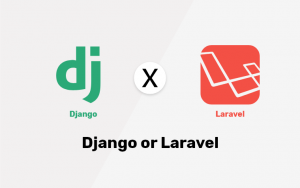Django Web Framework Guide – Web App Development with Django
Welcome to the tutorial page of ChromeInfotech. Now in this guide, I will tell you how to develop a Django Web Framework Application by typing easy and straightforward command.
Let me give you a small intro of ChromeInfotech!
ChromeInfotech is a leading Python Web Framework Development organization. And we have certified and experienced Django Developers who can give an excellent product. As per the need and requirement of the client.
We have delivered more than 160 application using the Django Web Framework. If you are looking for the best Django development company or looking to hire a Django Web Framework developer, contact us.
Web Development is an evergreen space with a lot of chances. Since you have arrived on this blog, you are either a web developer or trying to be one. In any case, you should realize that Python Django Certification is an ability in intense interest for fast web venture development and has nicknamed as “the web framework for fussbudgets with due dates.”
I am going to discuss a standout amongst the most drifting web development framework Django and will enable you to begin with it. In this Django instructional exercise, I will acquaint you with the central ideas of Django and help you see how everything fits together while building a Django application.
So we should begin with this Django instructional exercise and see every one of the subjects in the accompanying succession:
- Why Web Framework & Why Django?
- What is Django?
- Features of Django
- Django Architecture
- Django Installation
- Create your First Web App in Django
Django Web Framework Guide: Why Web Framework & Why Django?
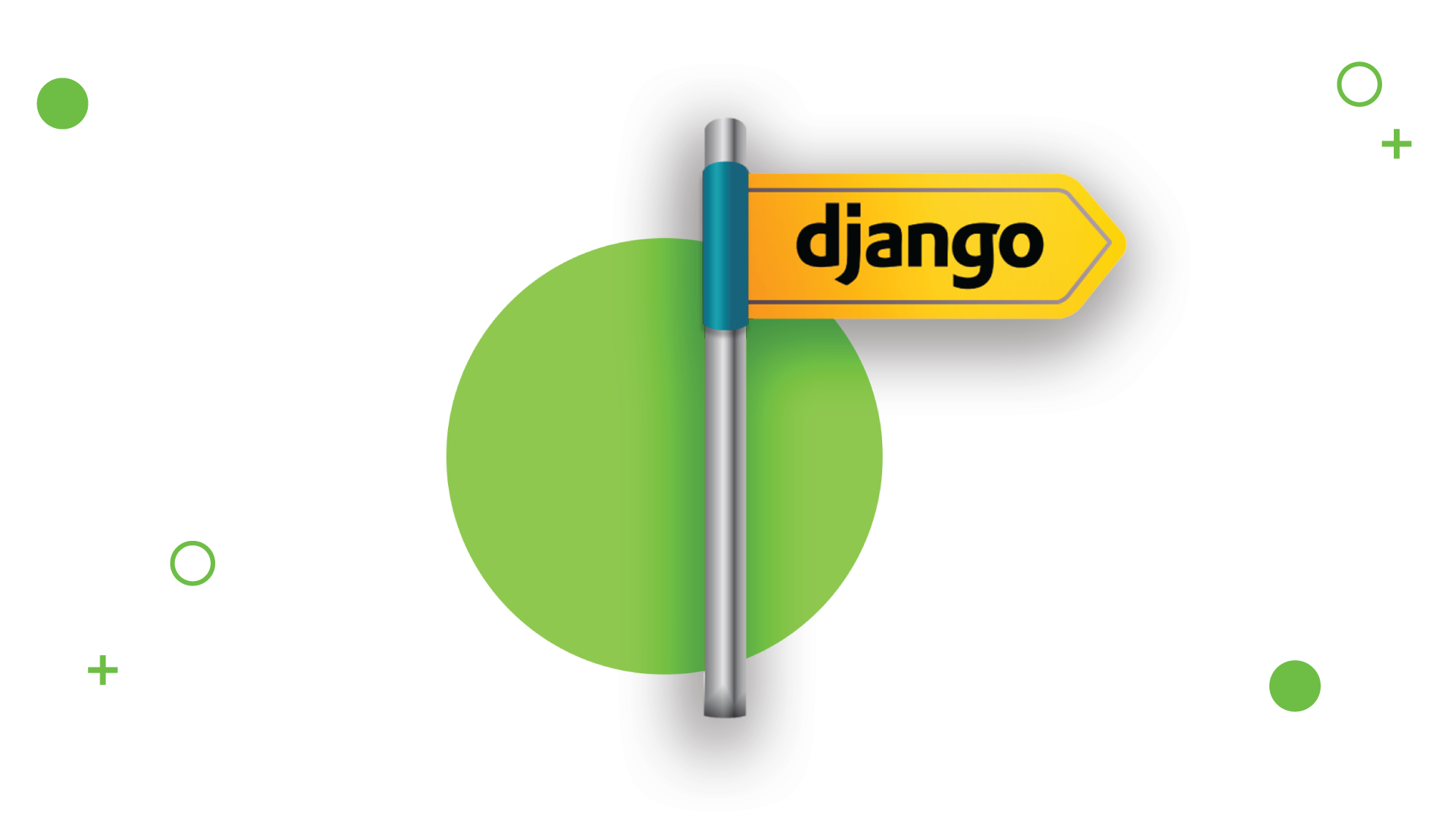
Before understanding the Django, allows first comprehend for what reason do we need a Django web framework? A Django web framework is a server-side application framework which is intended to help the development of dynamic websites.
With the assistance of a framework, you don’t need to deal with the issues of web development and its different parts. Along these lines, it makes the life of a web application developer a lot simpler as they don’t need to code starting with no outside help.
We have also expertise in different web frameworks. Some of them have recorded below:
- Python
- Django
- PHP
- Mean-Stack
- SharePoint
- BlockChain
- Ruby-On-Rails
- Dot.NET
- ASP.NET
- AngularJS
- React Native
- CloudFusion
- InDesign
One of the features of Django based on python. From quite a long while python has been the most famous programming language and keeps on being a most loved among the gifted software engineers. Thus, Django conveys straightforward and excellent code writing, making it significant for the developers just as the clients. It has different focal points as it has a programmed organization interface, Object-social mapper(ORM) and some more. So we should comprehend what precisely it is.
What is Django?

Django is an open-source web framework that named after Django Reinhardt.
It pursues the rule of “Don’t Repeat Yourself.” As the name says, this important is tied in with keeping the code basic and non-rehashing. Django is likewise an abnormal state, MVT architect who represents Model View Template.
Features of Django Web Framework
Some key highlights of Django are:
Quick:

Django is crazy and fast. It energizes agile development with a spotless and down to earth plan. It is free and open source which causes the developers to finish their application as fast as could be allowed. Django Web Framework deals with a significant part of the problem of Web development without expecting to reevaluate the wheel.
Huge amounts of Packages:

Django contains a set of segments that encourage you to build up your websites quicker and simpler.
You don’t have to download it independently as Django introduces every one of the additional items, bundles, and the related conditions to deal with regular web development assignments.
It likewise deals with client confirmation, content organization, site maps and some more.
Secure:
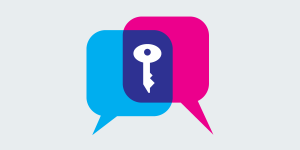
Django Web Framework is exceptionally safe as part more work has been done there by the python web community. It causes the developers to keep away from numerous basic security botches, for example, SQL infusion, cross-site scripting, csrf, and clickjacking.
Its client verification system gives a protected method to oversee client records and passwords.
Adaptable:

Django has a lot of reasonable defaults and Python makes it express.
Additionally, Instagram and Disqus are two items that serve a great many clients and use Django as their essential backend.
So I’d preferably state it’s truly adaptable.
Versatile
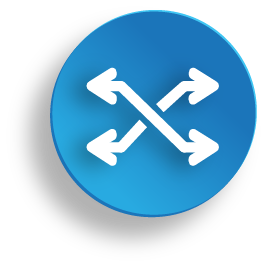
Django Web Framework is utilized to construct all kind of things – from content management systems to interpersonal organizations to scientific computing platforms.
Accordingly, Django is amazingly flexible in all fields.
Next, let us advance in this Django instructional exercise and comprehend the architecture or inward working of Django.
Django Web Framework Architecture
Django Web Framework following an MVC- MVT architecture.
MVC represents Model View Controller. It uses for building up web productions, where we break the code into different portions. Here we have three parts, a model view, and a controller.
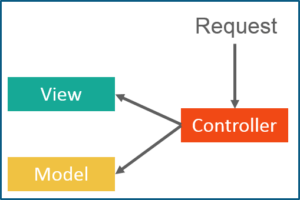 Model – Model used for putting away and keeping up your information. It is the backend where your database has characterized.
Model – Model used for putting away and keeping up your information. It is the backend where your database has characterized.
Perspectives – In Django Web Framework templates, sees are in html. The view is about the introduction, and it isn’t at all mindful of the backend. Whatever the client is seeing, it alludes to a picture.
Controller – Controller is a business rationale which will connect with the model and the view.
Now, we know what is MVC, after that let’s learn about the Django MVT pattern.
MVT represents Model View Template. In MVT, there is a predefined template for UI. We should take a model, say you need to compose a few static html frames like hi client 1, hi user2, etc. With a template, you will have just a single record that prints hi alongside the variable name.
Presently this variable will be substituted in that specific template utilizing some jinja rationale. That is the enchantment of model; you don’t have to revamp the code again n once more!
Presently you may ponder where the controller is?
- In the instance of MVT, Django Web Framework itself deals with the controller part; it’s inbuilt.
- We are moving ahead in Django instructional exercise, how about we see how things work inside.
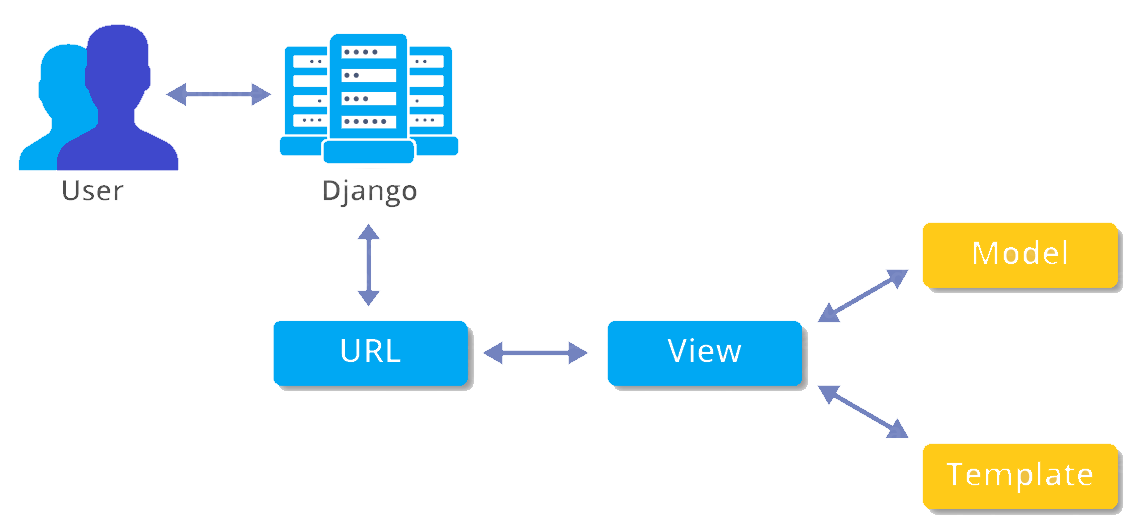
In the above picture, the template is your front end which will collaborate with the view and the model will use as a backend. At that point, the light will get to both the model and the templates and maps it to a URL. From that point onward, Django assumes the job of the controller and serves it to the client.
Since you comprehend the architecture or how Django functions inside, how about we push forward in Django instructional exercise and introduce Django in our systems.
Django Web Framework Installation
Give me a chance to control you through the way toward introducing Django on your system. Pursue the beneath steps:
- Phase 1: Visit the link: https://www.djangoproject.com/download/
- Stage 2: Enter the pip command in the command prompt, then installation will start.
Refer to the screenshot below; it helps you to understand.
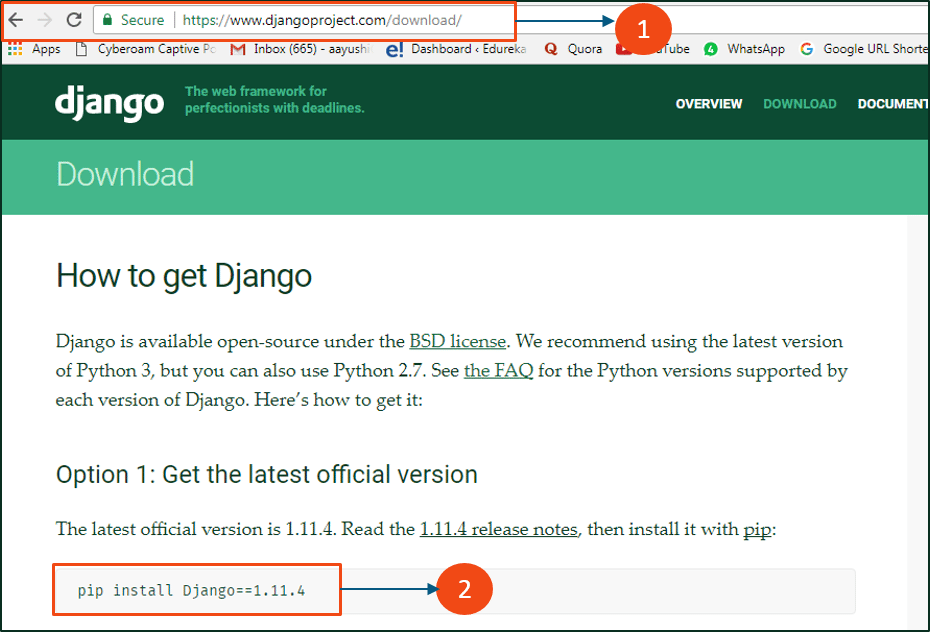
By following the above phases, you finished with the Django Web Framework installation. Next, it’s time we construct our web app.
Excited? Let’s get started!
Create Your First Web App in Django Web Framework
For making a web app, first how about we do a project. To do a project, go into an index where you might want to share your code, at that point run the accompanying direction:
![]()
When your project has made, you will discover a rundown of records inside the project index. We should talk about every single one of them.
- Manage .py – It’s a command-line code that gives you a chance to interact with the Django project in different ways.
- Myproject/ – It’s a real Python package for your specific project. It applies to import, say – myproject.urls.
- Init.py – Init tells python, it’s treated just like the python package.
- Settings .py – This file managing every one of your project settings.
- Urls.py – This is a central controller that maps your web app or website.
- Wsgi.py – It deals as a section point for the WSGI compatible web application servers.
Note
To make your app, ensure you are in a similar directory as named manage. Py and after that type the command below:
![]()
Presently in case, we take a gander at the index of ‘webapp’, we have some additional things from the first myproject. It incorporates model, a test which identified with your backend databases.
Next, in the Django Web Framework guide, you have to import your application physically inside your project settings. For that, open your myproject/settings.py and include your app manually:
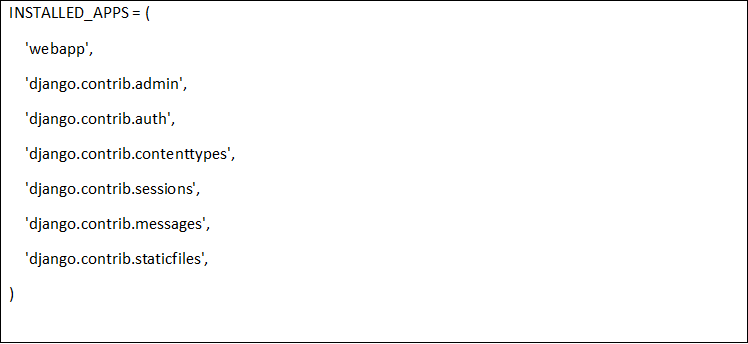
When you have installed your application, we should make a view now. Open your webapp/views.py and put the code (below):

In the above code, I have made a view which returns httpResponse. Presently we have to outline view to a URL. We need a URLconf in our application. So we should make another python record “urls.py” inside our webapp.
In webapp/urls.py incorporate the accompanying code:

In the above code, I have referenced a view which will return list (characterized in views.py document). The URL design is in normal articulation position where ^ represents the start of the string, and $ represents the end.
The subsequent stage is to point the root URLconf at the webapp.urls module.
Open your myproject/urls.py document and compose the code –

In the above code, I have included my webapp and incorporated the webapp.urls. Presently remember to import django.conf.urls.include and embed an incorporate() in the urlpatterns list. They incorporate() work permits referencing different URLconfs.
Note
that the standard articulation doesn’t have a ‘$’ but instead a trailing cut, this implies at whatever point Django experiences incorporate(), it slashes off whatever piece of the URL coordinated up to that point and sends the rest of the string to include URLconf for further handling.
We finished the coding part! How about we currently begin the server and see what occurs. To start the server, type the command:
![]()
In the wake of running the server, go to the local host page (Click Here) in your program, and you should see the content “Hello! Welcome to ChromeInfotech!”, which you characterized in the list see.
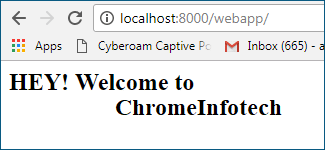
Yippee! We have expertly made a simple Django Web Framework App.
I hope you have delighted in perusing this Django web framework guide. We have secured every one of the essentials of Django, so you can begin rehearsing now. After this Django instructional exercise, I will think of more websites on Django for web application development, REST framework, Django models and some more.
Stay tuned for the next blog in this sections!
Now that you know the basics of Django, if you are looking to create a product using Django, or you have a creative idea in mind, let’s get in touch with us.
As a leading Django web Development company, we help clients to come up with the best idea, and we turn their imagination into reality. We have a team of developers, designers, engineers, programmers, and testers and they have years of experience in Django web Framework and PHP development.
We have quality Django web development team that can give you a great shot to your application. They also perform integration with Chat SDK, Map SDK, Cloud Server, App Analytics, Payment Gateway and so on.
Got a query for us?
Please mention it in the comments section of this “Django web framework guide,” and we would love to get back to you as soon as we can.

